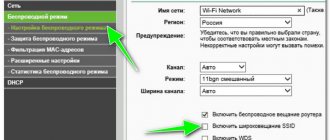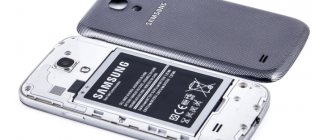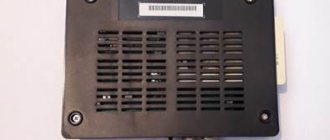Due to the fact that a modern person spends half of his life on a smartphone, using applications, the Internet, a camera, etc., the battery is greatly discharged. And it doesn’t matter whether the user is at home or at work, in nature or in a restaurant, the mobile friend is always active. To maintain the battery charge, an external energy storage device was invented. It helps out always and everywhere, but it happens that the Power Bank does not charge the phone. This article describes all possible breakdowns and ways to solve them.
External battery and its correct choice
A power bank (portable charging device) is an energy storage device that can power a device in circumstances where outlets are inaccessible.
A portable charger has become a lifeline for the modern user, because with its support there is no need to worry about low battery levels if you are using the gadget dynamically.
The use of external battery chargers is quite widespread:
- A tourist expedition where there is no access to electrical outlets.
- Long flight or train ride.
- Active use of the device if the capacity is not enough for a day.
- Low power of the integrated battery.
Choosing the right external battery is quite a difficult task, due to the fact that they vary in size and characteristics. For example, many power banks can only charge one phone, therefore, if you want to power something larger (such as a camera), you will need a stronger external battery. It is worth considering that the rated power declared by the manufacturer is 20 percent less than the real one, so take it with a margin.
What to do if the power bank is charging slowly
Those who have just started using such a device do not always understand that long-term charge replenishment is normal. The capacity of the power bank reaches 30,000 mAh, and to replenish this amount will take about a day, or even more. Therefore, before ringing the bells, they begin by studying the instructions.
But what if it takes a long time to charge a “jar” of small or medium capacity. This phenomenon is caused by:
- a malfunction of the adapter that produces less than 1 A;
- thickness of the cord. If it is too thin, some energy will be lost;
- problems with the controller;
- problems with contacts. Perhaps they have moved away and the stability of the current supply has been disrupted.
Usually it is enough to replace the cord and adapter, and everything falls into place. In rare cases, soldering of internal contacts is required.
Power bank is a useful device that will “restore life” to dead gadgets. But you also need to monitor its charge level. Sometimes problems arise with charging, and most of them are harmless and can be solved independently, without visiting a service center.
Current strength
The output voltage, measured in amperes, sets the speed level of the Power bank with which it is capable of charging your gadget. The higher the power output, the sooner the mechanism will charge using the compatible USB cord. You can choose a device with an output power of 1A or 2A. Most smartphones easily accept a current of 1 A, however, for tablets it is desirable to have more power, otherwise such a device will take quite a long time to charge. It is best to take an external battery that is supplied with a current of at least 2 A.
If possible, ask the seller if the device supports Quick Charge 1.O, 2.O or 3.O. It will make it possible to quickly charge devices compatible with this technology.
Note! The smartphone cannot be charged if the external battery is almost empty.
The number of USB outputs has a big impact on how many phones you can charge in parallel using an external battery. The more ports a Power bank has, the more devices you can charge together. They often have 1 or 2 USB ports. The newest and most elite modifications have USB Type-C. When charging has 2 outputs, they have different current powers (1 A and 2 A).
It is possible to charge several devices in parallel, for example, a mobile phone using a 1 A output and a tablet using a 2 A output. Please note that 2 mobile phones will charge faster than a phone and a tablet. For daily use, 1 port is sufficient.
The strength of the input current should also not be neglected, because it has a great influence on how quickly the Power Bank can charge from 220V. According to the standard, it ranges from 1A to 2A. The higher the number, the sooner your portable assistant will charge. We recommend purchasing a unit with a current rating of at least 2 A.
What to do if the device does not charge completely
Many people are faced with a situation where the charge level of the power bank reaches 90%, 80% or even 50%, and goes no further.
What causes this:
- The wrong adapter or cable is used. For normal operation, the device requires specific current levels, usually up to 4 A;
- capacity reserve has decreased. If the battery is used for a long time, part of its useful capacity is lost - this is normal;
- controller malfunction - the fuse simply turns off the current supply.
If the problem persists when connecting another cord or adapter, you will have to send the power bank in for repair.
Determining problems
When the charger was purchased not so long ago or has not been used for a long period, you can try to recharge it for at least 10 hours. The problem is that while the device was lying around in a warehouse and not being used, the chemical processes in the battery could have slowed down significantly, which is typical for lithium-ion batteries even when they are not functioning. It may well be that he does not charge his mobile phone precisely because of this. When “swinging”, the elements that slow down the battery will disintegrate, and the device will produce the required amount of energy; you need to make sure of this by trying to charge your smartphone.
It happens that the charging procedure starts at first, and then stops. Since most of the autonomous chargers are imported from China, it is no wonder that the capacity coefficient shown on the charger does not correspond to its real level. Undoubtedly, a power bank with a genuine capacity of 2500 mAh will not be able to fully charge a phone whose battery is 3500 mAh.
Why doesn't Power Bank charge my smartphone?
There can be two situations - the new power bank does not charge the phone, or the charger that has been used for a long time has stopped working. Let's consider both cases in detail.
Situation No. 1: the new device does not charge the smartphone
The reason in 85% of cases is the incompatibility of the two devices. Signs of incompatibility:
- the indicator on the battery case blinks when connected to the network;
- the battery accumulates charge;
- but when connected to the phone nothing happens to it.
Before purchasing a portable charger, you should find out which specific batteries are suitable for your smartphone.
This information can be found in the technical documentation for the phone or from a consultant in the store. The problem in this case is solved by replacing the portable device with another model. It may also happen that the new power bank is fully compatible with a smartphone or headphones, tablet, but when connected, the gadget still does not charge. In 9% of cases, the portable battery is faulty, a manufacturing defect. When purchasing a device, it is better to double-check it.
Situation No. 2: the phone suddenly stopped charging, does not charge 100%
The problem is with one of the two batteries. Worn lithium batteries do not accumulate charge. If you use gadgets for a long time, you should double-check both. For example, connect another power bank to the phone and evaluate the reaction. If charging is normal, there is a problem with the charger. The battery of the power bank is checked in the same way.
Problems can arise for other reasons:
- broken connector contacts;
- rusting of ports due to incorrect operation of devices;
- mechanical damage;
- errors in the operation of gadgets that led to rapid wear of batteries;
- natural wear and tear of the ABC.
Another reason why a power bank does not charge a smartphone for a long time is the installation of a large number of applications and “heavy” software. Software products quickly discharge the battery, increasing its wear. Working in this mode for a long time will eventually lead to the smartphone stopping turning on.
Most faults are extremely difficult to identify on your own in the absence of special equipment and diagnostic software. If basic solutions do not help, it is wiser to contact a service center. Unskilled repair attempts may result in the purchase of new equipment.
Running applications
Some programs for phones have “heavy” filling that heavily loads the system and processor. Such processes drain the battery, working even in the background; because of this, the device will charge very slowly. You can check which applications are using a lot of energy in the settings by going to “Applications”, then clicking on the “All” tab, then in the submenu selecting view cache.
Where to start looking for a problem
If the phone does not charge from the power bank, then, first of all, you should check the ability to restore the charge from a regular outlet. If, after connecting to the network adapter, the phone begins to charge in standard mode, then you should check the connecting cable that is used to connect the power bank to the smartphone.
If the wires are in order, then it is logical to assume that the fault is in the external battery itself.
Still have questions or have something to add? Then write to us about it in the comments, this will make the material more useful, complete and accurate.
Full charge again
As they say, the situation is the other way around. The battery charge has been fully restored, but you keep forgetting to disconnect it from the charger. This may also later manifest itself as a malfunction of the power bank.
Those who are inexperienced in this matter may think that the non-blinking indicators also represent a battery malfunction. However, this action on the part of the indicator only symbolizes the full charge of the external drive.
What was the cause and how to eliminate it
In fact, there are many reasons why the power bank battery does not work. The most basic of them are the following two: a wire break, a defect in the product itself. However, there are also unpredictable options.
Before disassembling the product, you need to use simpler methods to determine the cause of the breakdown. If they do not help, then you will have to disassemble the device body itself and replace the internal recharging elements. But it is worth noting that this method should be performed only as a last resort.
Power outage
The cause of such a malfunction can only be determined by disassembling the Power Bank. It can occur due to mechanical impact on the external battery (impact on a hard surface), poor soldering at the factory, or various types of vibrations.
When you open the product case, you will easily find a break in the internal wires of the product. They will become noticeable even to the naked eye.











